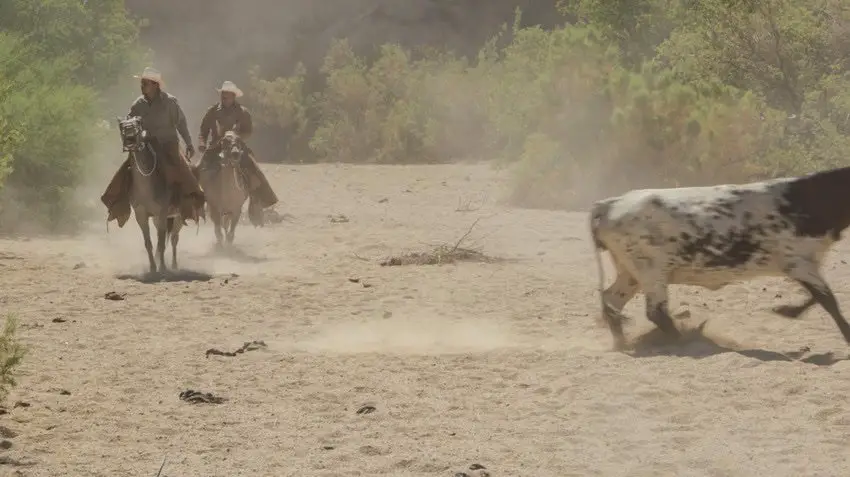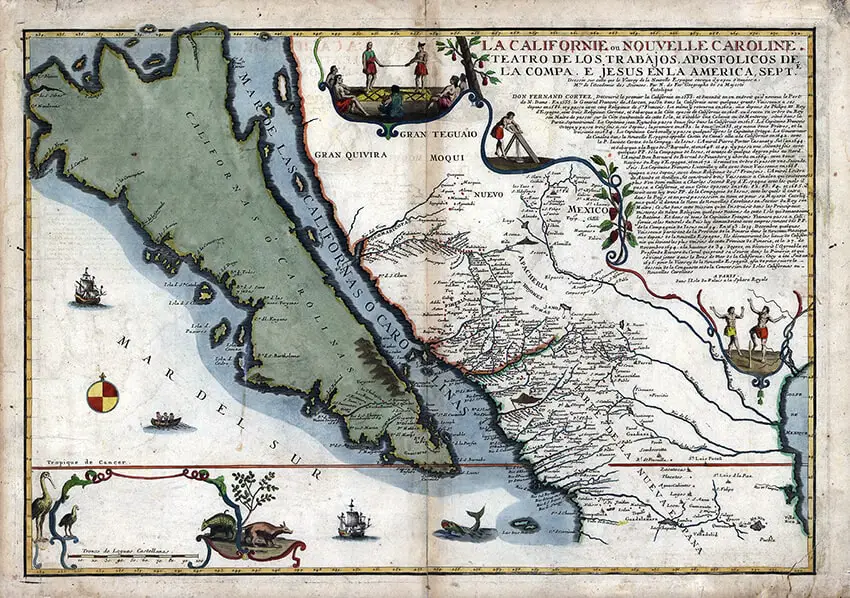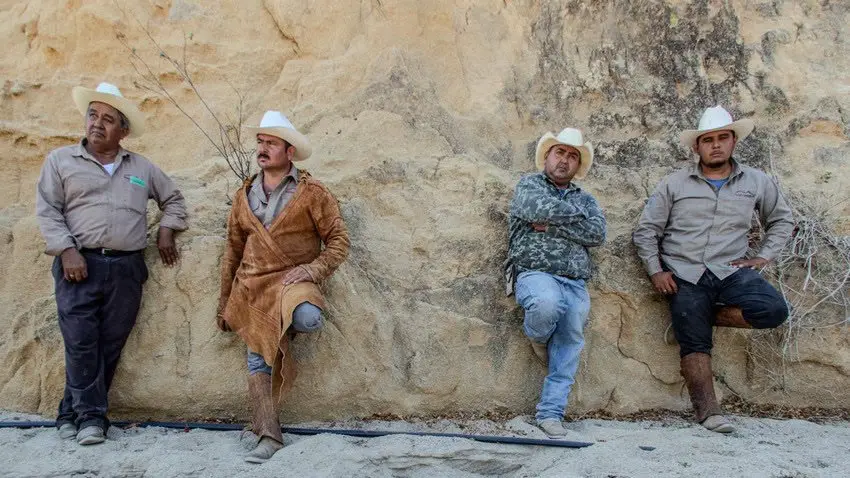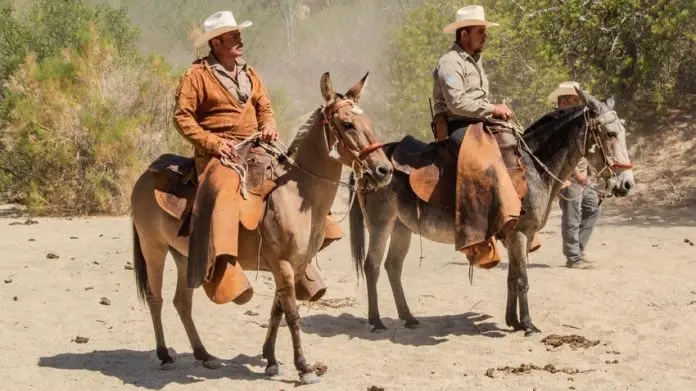When we think of Baja California Sur, the first thing that comes to mind is its rich marine life, evoking images of Jacques Cousteau discovering the depths of the sea. However, we often overlook the historical influence of Jesuit missionaries, mining activities and the cowboy lifestyle, which have all significantly shaped the region. Without these influences, Baja California would have been a very different place than the one we know today.
Cowboys in Baja California?
You heard me right — the cowboy lifestyle. Thanks to my grandfather’s love for Western movies, I’ve seen more than my fair share. Fragments of John Wayne in “Rio Bravo” or “True Grit” are etched into my memory, so whenever I hear the word cowboy, John Wayne comes to mind, perpetuating a cliché that’s not entirely accurate.

As years have passed and I’ve studied more, I now understand why my grandfather, who grew up on a ranch in Mexico, is fascinated by the figure of the cowboy. The Mexican rancher and the cowboy are the same character, just in different languages. Both share similar character traits: honor, justice, solitude, a manly nature and the ability to survive anything. They embody the characteristics of anyone deeply connected to the cycles and harshness of nature, even in today’s world.
If I were to tell my grandfather that John Wayne and Jorge Negrete are essentially the same character in different languages, he would probably think I’d had too much tequila. But what my grandfather doesn’t remember is that I’m a historian, and I’ve studied why they are essentially the same character.
In order to understand the origin of the jinete — the Spanish word for horseman — we need to travel back to the 1500s and explore the history of the Spanish Empire and its connections to North Africa. The Spanish encountered the jinete through the Amazigh, or Berbers, who were northern African peoples. One of these groups, the Zanata, used a different saddle and riding technique than those used in Europe, allowing them greater freedom and speed on horseback. The Spanish adopted this riding style, called it jinete and brought it with them when they colonized the Americas. This culture of horsemen and cowboys became widespread due to the usefulness of horses in the geographical and climatic conditions of the New World.
From Veracruz to Baja
The Spanish were motivated by their search riches, particularly gold. They expanded across the continent in pursuit of this goal, reaching Baja California in the 1530s. Although they didn’t discover gold, they found lots of minerals, which they began exploiting. The Spanish established towns to support these mining operations, including ranches for food production.

The vaqueros, those responsible for tending to cattle held significant roles in Baja California’s haciendas and towns. The community relied on them and the livestock they looked after for food. Sometimes, these individuals would spend entire days searching for ample grazing lands for their cows, which was challenging in the middle of the desert. They came equipped with burritos, the most convenient and nutritious food that was least likely to spoil, which they packed into saddlebags and could eat when they were gone for days.
The cowboys of the peninsula today
Last week I spent a few hours with modern vaqueros near La Paz, under the scorching sun at 104 F, with their livestock hiding under the bushes in the middle of the desert landscape. It was during this time that I began to understand why John Wayne was so taciturn in his movies. Now I could relate.
As I ran away from the wasps, searching through every bush for a coralillo — a milk snake — my J. Crew linen shirt got ripped by the branches. I envied the vaqueros with their leather pants and leather jackets over their jeans, and the cotton shirts that protected them. I begged for mercy and traded my Ralph Lauren cap for a wide-brimmed hat to shield myself from the sun. In that moment, I felt completely useless. Typical city dweller.
Apart from the total respect and admiration I now have for modern cowboys, I’m happy to report that there are communities reviving the traditional cowboy culture of Baja California. They’re also stewarding the land, restoring the peninsula’s original ecosystem through a cattle rotation system to prevent soil erosion and mitigate the effects of global warming.

Rancho Cacachilas is one of these places, and it’s also suited for people who, like me, once thought vaqueros were just movie props. They offer some other activities suited for our very city dweller selves, like cheese and wine tasting. Also, if you want to really learn the history of vaqueros and cowboys, visit the appropriately named MUVACA, the Cowboy Museum of the Californias. It’s beautifully explained and pretty fun.
Amigos, if you’re in Baja California Sur, live your Jacques Cousteau experience. But make sure you also live the cowboy experience, without which the Californias would not have developed.
María Meléndez is a Mexico City food blogger and influencer.
